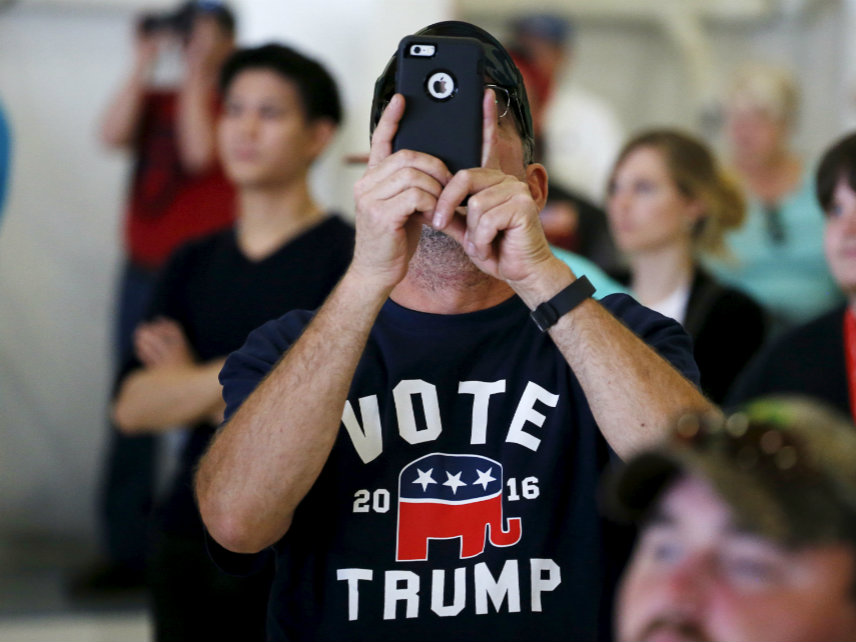Trump's Trade War Was Supposed to Protect American Tech Companies. Instead It's Hurting Them.
"Bilateral tariffs result in lower GDP, employment, investment, and trade for the U.S.," a new report concludes.

One of the chief justifications for President Donald Trump's nearly year-long trade war has been the promise that he would get China to stop doing some things that American businesses view as unfair—including the Chinese practice of demanding access to intellectual property held by American tech companies.
But now that a March 1 deadline for reaching a trade deal with China has passed, and with no clear indication that an April meeting between Trump and Chinese President Xi Jinping will yield a final agreement, the very tech firms that are supposed to be helped by Trump's bellicose trade strategy are facing the prospect of a prolonged trade conflict that could do serious harm to their markets on both sides of the Pacific.
A new report from the U.S. Chamber of Commerce and the Rhodium Group, a market research firm, indicates that existing tariffs on about $250 billion worth of Chinese imports to the U.S. are already weakening America's information technology sector. If there's no resolution and the Trump administration follows through with threats to add more tariffs, the U.S. would face about $1 trillion in cumulative economic losses in a decade, as the resulting "nativization" would see American and Chinese tech firms increasingly developing independent of one another.
"Bilateral tariffs result in lower GDP, employment, investment, and trade for the U.S.," the report concludes. "Tariffs raise import and export prices, resulting in higher costs for US consumers and businesses, lower trade both ways, and less efficient resource allocation."
After months of promising to increase tariffs on China on March 1 unless a deal is reached, Trump backed away from that threat in late February. He and Xi are planning to meet at Trump's Mar-o-Lago research sometime next month, but no date has been announced yet. Some observers of the negotiations are now predicting Trump and Xi will reach a "weak" deal that does not address China's abuses of intellectual property or the forced transfer of American technology—an outcome that would allow Trump to claim victory heading in the 2020 election cycle but might cost Trump the support of businesses hoping he would rewrite the trade rules with China, The New York Times reports.
Even if a deal with China is reached and the current tariffs are lifted, they would likely be replaced with greater barriers to tech trade between the two countries. And some damage has already been done, the Rhodium report suggests, with U.S. GDP estimated to be reduced by $50 billion for 2019.
If the U.S. and China end up going their separate ways on tech trade, pretty much everyone will lose. Global GDP would fall by about $100 billion over the first five years, according to the Rhodium report. Trade makes everyone better off in the aggregate, so it makes sense that cutting off trade would reduce prosperity overall. But the report also shows that cheaper regional labor markets—Mexico for the U.S., Southest Asia for China—would see relatively smaller economic losses as supply chains would likely shift to those locales.
In other words, cutting off tech trade with China would not result in iPhones being built in the United States—another thing Trump has said he would like to see happen—but it might mean they would be built in Mexico.
